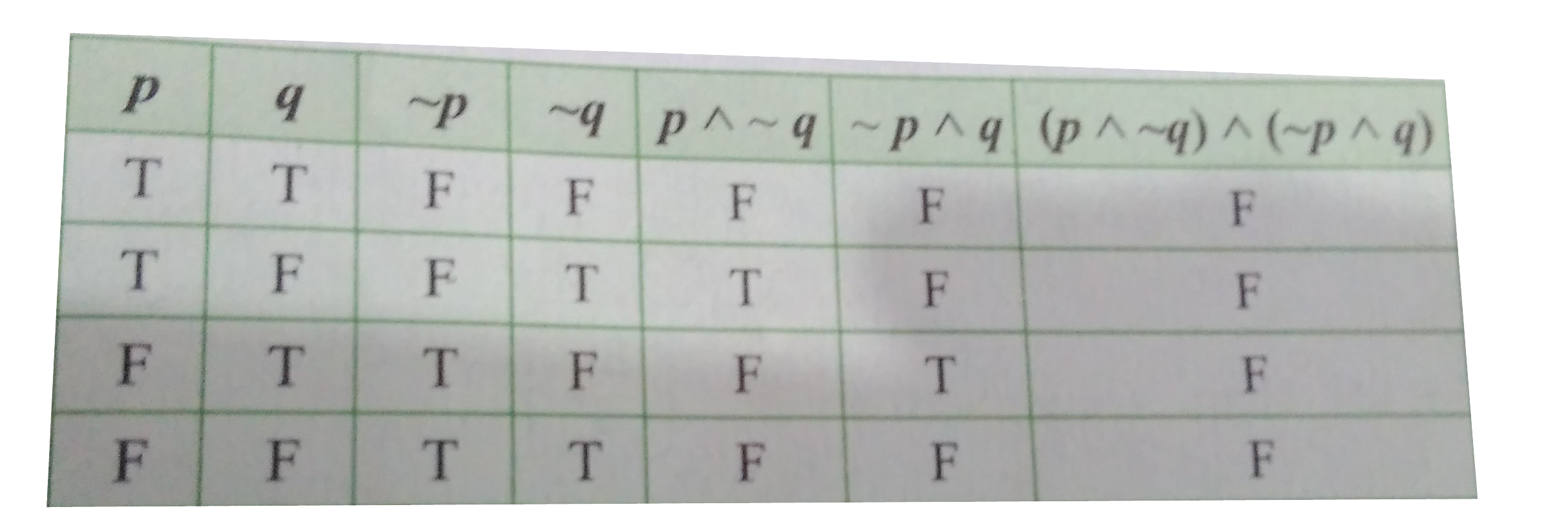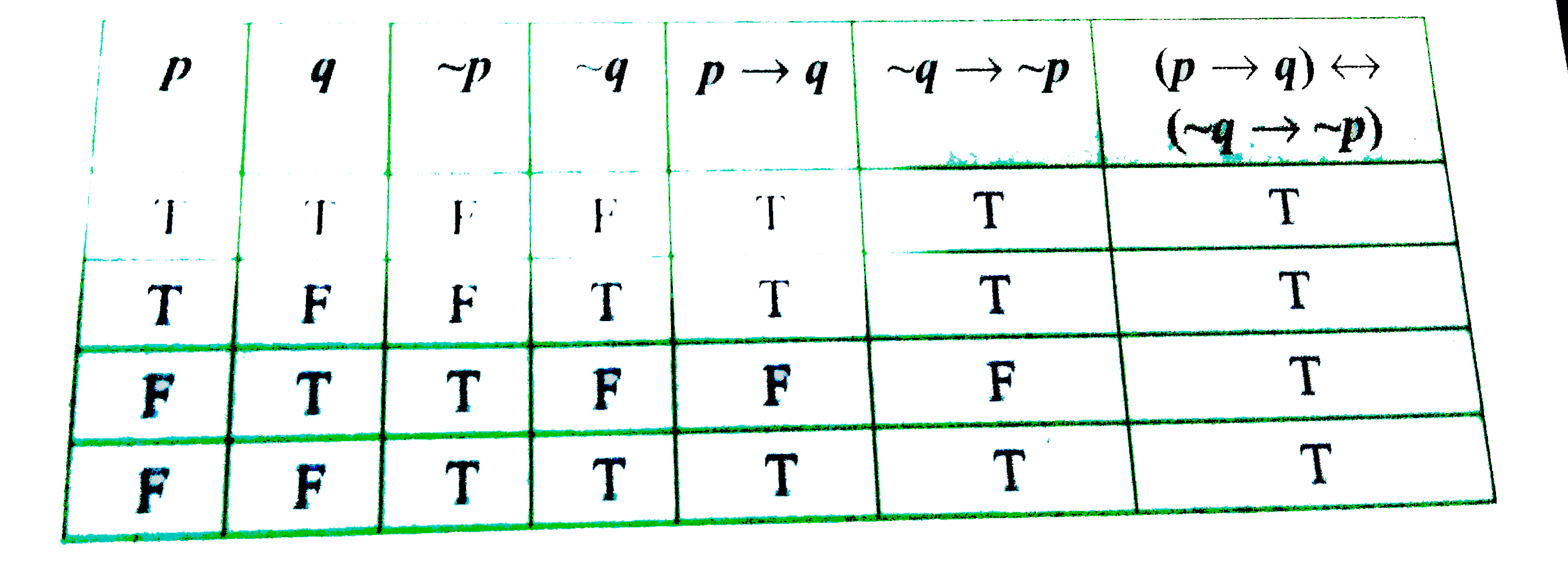Consider :
Statement I:
(p∧~q)∧(~p∧q) is a fallacy
Statement II: (p→q)↔(~q→~p) is a tautology
Statement-1 is true, statement 2 is true, statement 2 is a correct explanation for statement 1
Statement 1 is true, statement-2 is true, statement 2 is not a correct explanation for statement 1
Statement 1 is true , statement 2 is false,
statement 1 is false, statement 2 is true
The correct Answer is:B

It is fallacy

Topper's Solved these Questions
- BOOK - CENGAGE ENGLISHCHAPTER - MATHMETICAL REASONINGEXERCISE - Single correct answer type38videos
MATHMETICAL REASONING
- BOOK - CENGAGE ENGLISHCHAPTER - LOGARITHM AND ITS PROPERTIESEXERCISE - JEE ADVANCED1videos
LOGARITHM AND ITS PROPERTIES
- BOOK - CENGAGE ENGLISHCHAPTER - MATRICESEXERCISE - Single correct Answer34videos
MATRICES
Similar Questions
Statements (p→q)↔(q→p)
View SolutionThe logical statement (p→q)∨(q→~p) is :
View SolutionObserve the following statements
Statement - I : p∨~(p∧q) is a tautology
Statement - II : A statement pattern is called a tautology, if it is always true, whatever may be the true value of constitute statements.View SolutionShow that [(p→q)∧(q→r)]→(p→r)is a tautology
View SolutionStatements -1 : ~(p↔~q) is equivalent to p↔q
Statement-2: ~(p↔~q) is a tautology.View SolutionVerify that the statement P∨~(p∧q) is a tautology.
View SolutionShow that (p∧q)∨(~p)∨(p∧~q) is a tautology
View SolutionObserve the following statements :
Statements - I : (p∨q)∧(~p∧~q) is a contradiction.
Statement - II : A statement pattern is called a contradiction, it it is a always false, whatever may the truth values of its consitutes statements.View SolutionThe statement ~(p∧q)∨q
View SolutionThe statement p∨q is
View Solution

